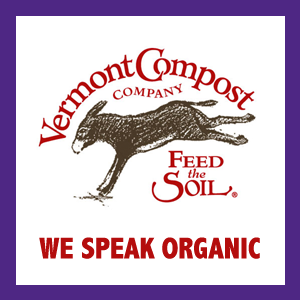- Hire a winner.
- Hire a potential winner.
- Prayer.
Prayer is probably not the best strategy when it comes to hiring, and I don’t advocate it as a strategy.
But potential winners are out there. They usually cost less to hire than established winners, and they’re easier to find. And you can train them to win on your farm, in your systems, instead of on somebody else’s.
Three Characteristics of Potential Winners
You can train somebody to do a job, but you’re unlikely to change their fundamental character. When I hired employees at Rock Spring Farm, I looked for applicants who were honest and eager, and who cared about their work. Were they polite and forthright in their communications? Did they dissemble when asked uncomfortable questions? Did their resume line up with their references? At their interview, did they show up on time and wear clean clothes? Were their communications free of spelling and significant grammatical errors? Were they responsive to communications and did they follow up in a timely fashion?
You want people who have demonstrated potential, so we looked for applicants with experience that showed they had hustle and determination. For our harvest crew, we didn’t seek people with experience picking vegetables – in fact, unless an applicant had years of experience, we generally considered working on other vegetable farms to be a liability rather than an asset, as workers with some training generally had to unlearn one way of doing things so that they could learn to do it our way.
Some things we found, year after year, that pointed to potential: experience in food service, whether it was cooking or serving; running cross country; getting excellent grades; participation in non-sports extra-curricular activities; musical excellence; completing a term of service in the Peace Corps; and outdoor leadership training.
For workers at a higher level we looked for the basic skills necessary for those jobs. For crew leaders, we wanted to know if the applicant had experience telling people what to do? For a machinery operator, we wanted to know if they had they driven a tractor on a vegetable farm? We didn’t need for them to have lead crews on a vegetable farm, or driven our tractors and our implements – we could train them to do that. But without the basic skills, potential would have been lacking in these more advanced positions.
The best applicant won’t succeed unless they fit in with the rest of the crew, and with the boss. If I didn’t like somebody, I didn’t hire them. If I didn’t think my crew would like them, I didn’t hire them. I know the personality traits that I can handle spending time with, and I never felt like it was my job to fight an uphill battle with myself to make the position work for somebody.
Winnowing
- A self-winnowing process, where we provided information about the farm, our mission, and our values;
- A simple test to determine some basic character and potential;
- A written application;
- An in-person evaluation and calling references.
GET DIRTY, HAVE FUN, EAT WELL!
Are you looking for an exciting workplace, an opportunity to stimulate your mind and exercise your body? Rock Spring Farm is at the forefront of the organic market garden renaissance in Northeast Iowa and Southeast Minnesota. Our diversified organic vegetable and herb farm offers the chance for motivated individuals to enjoy the outdoors and be a part of developing a sustainable agriculture in the Upper Midwest.
We hire our largest work crews from June through August, but we are always interested in talking to qualified individuals for our year-round vegetable and herb growing and packing operations.
When it comes to farm work, we live by the motto, Eat Well, Get Dirty, Have Fun. Rock Spring Farm enjoys a diverse workforce with plenty of respect and a positive attitude. We believe that good work, done mindfully and well, has the ability to transform ourselves and our world.
Local organic farms change the food system by becoming robust businesses and consistently providing large amounts of high quality organic food to their customers, with whom they build strong, professional relationships. We are looking for employees who embody this attitude.
We outlined the characteristics of the people we wanted to work with: hardworking, communicative, reliable and responsible; punctual, and arrive for work ready to work; have reliable transportation; receptive to feedback and adjustments for work processes; and so on. By outlining our principals, and the traits we looked for in successful employees, a certain percentage of potential employees simply walked away.
Finally, we encouraged people to look around the website and get familiar with the farm, then click on a link to find the instructions for applying.
Clicking on that link and following the instructions was a test of basic character and potential. Could an applicant follow instructions? Did they want to? I was always surprised at the number of people who couldn’t follow these simple instructions:
HOW TO APPLY
To apply for a position at Rock Spring Farm, send an email to [email protected] with the following information:
- Your contact information.
- A letter of interest.
- Your resume and/or qualifications for the position you are applying for.
- The names, relationship, and contact information for three references.
- The dates you are available to start and an end date, if any.
We only accept applications via email; mailed or walk-in applications not accepted.
See how I did that? If an applicant can follow directions, I’ll know in short order. And if they can’t, I’ll know that, too.
Because handling employee applications appropriately says a lot about a farm, I wanted to portray that we, too, had good character, so I replied promptly with a boilerplate email that let people know that I had received their application, and what the process would be going forward.
With an application in hand, we now had the tools we needed to evaluate the applicants. Applications and attachments were printed and stapled together. At this point, we made quick judgment as to how well the applicant demonstrated their character, potential, and fit, and wrote a rating of 1 – 5 on the front page of the packet. I used a spreadsheet to track information about applicants, including start and end dates, ratings, and communications.
When we had received enough applications that we felt good about, top applicants were called with an invitation for an in-person interview. Interviews were conducted with an outline in hand, and started with a discussion of our farm, including our marketing strategy, production highlights, and standards for work. Questions referred back to these, with an effort to flesh out their potential and their character traits. This was also the point at which I could fundamentally determine if I liked somebody. Overall, I felt that engagement in the interview process, combined with a demonstrated interest in the farm, were far more important than the answers to any specific question.
I conducted interviews in the farm office in private, then sent applicants out to where work was taking place to spend a few minutes talking with other employees or my farm manager. It was important that the applicant’s potential teammates have the chance to make their own impressions, and relay them back to me; they often picked up on things that I missed in the more formal interview.
Ratings were made again on a scale of 1 – 5 on the applicant tracking spreadsheet.
At this point I would contact references for those applicants I was still interested in. In general, I didn’t feel like I got great information from references; most managers and supervisors were reluctant to provide detailed information. I found that it was most beneficial to focus on facts (dates of employment) and tone, more than anything else. Most potential winners had somebody who was strongly in their corner; my mis-hires almost never did.
Successful applicants were notified by phone, with a follow-up email to confirm details, and their acceptance or rejection of the position noted.
At the conclusion of the hiring process, we notified unsuccessful applicants by email: Thank you for applying for a position with Rock Spring Farm for the 20xx season. We had a number of qualified applicants this year, and have filled all of the seasonal positions that we have available at this time.
By using defining success and implementing a system to achieve it, we were able to substantially improve our hiring practices while not getting bogged down in the details and guesswork of trying to separate the potential winners from the applicants that were unlikely to succeed.





 RSS Feed
RSS Feed
